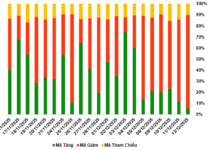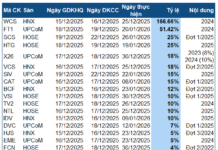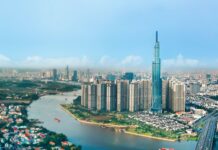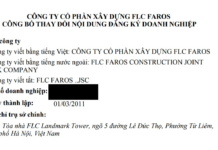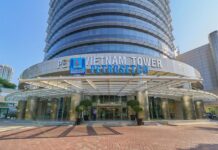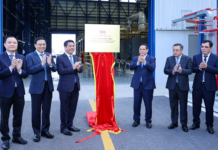The high-speed rail project, as planned, will pass through 20 provinces and cities from North to South, offering an opportunity to form a completely new development space along the length of the country. However, even now, this opportunity needs to be realized synchronously, with a clear and long-term philosophy.
What advantages will a chain of cities formed along the high-speed rail line have?
The most important advantage is the connectivity and interactivity among these cities. This capability enables high-speed rail cities to easily become regional service centers, reducing pressure on neighboring administrative, cultural, and social centers.

Illustration: AI
Therefore, high-speed rail cities should be planned and designed to become service centers with compatible infrastructure. Accordingly, priority infrastructure will include static transportation, warehousing, transportation connection hubs, shopping centers, and product introduction centers.
With the vision of becoming service centers, high-speed rail cities need to have a clear direction in terms of their functions to avoid the ambition of becoming multifunctional mega-cities. As the residents of these cities are traders and service providers, urban design must consider the cultural aspects, lifestyles, and living needs of these intrinsic residents.
Even now, while the North-South high-speed rail project is still in the planning stage, it is necessary to identify the opportunities it creates to make the best use of them and avoid potential negative impacts.
For example, the service cities formed along the rail line must be new cities with stations. They will not be existing administrative centers and will not increase pressure on old cities.

Illustration: AI
The high-speed rail stations, located in the high-speed rail cities, will thus be more than traditional stations; they will be a cluster of accessible services. The station will be both a shopping center and a regional product introduction center, a goods transaction and warehousing center, a travel service office, and a transportation connection hub (including parking lots, car rental services, bus stations…).
As most residents of these cities are engaged in trade and services, the planning will focus on compact cities with mainly apartment buildings and rental housing, rather than low-rise buildings.
High-speed rail cities will be cities of public transportation, well-planned, and function-oriented.
With the vision of forming a high-speed rail line, we will have dozens of high-speed rail cities with the above-mentioned functional characteristics. What will happen then?
First, administrative centers will be relieved as there will be a natural shift in the resident population.
Second, as high-speed rail cities are positioned as service centers with a transportation connection service complex, there will be a reduced need for private vehicles on roads between regions.
High-speed rail may not easily bring economic efficiency from a transport perspective, but by embracing the opportunity to form high-speed rail cities, we will envision a positive development space for the country.



